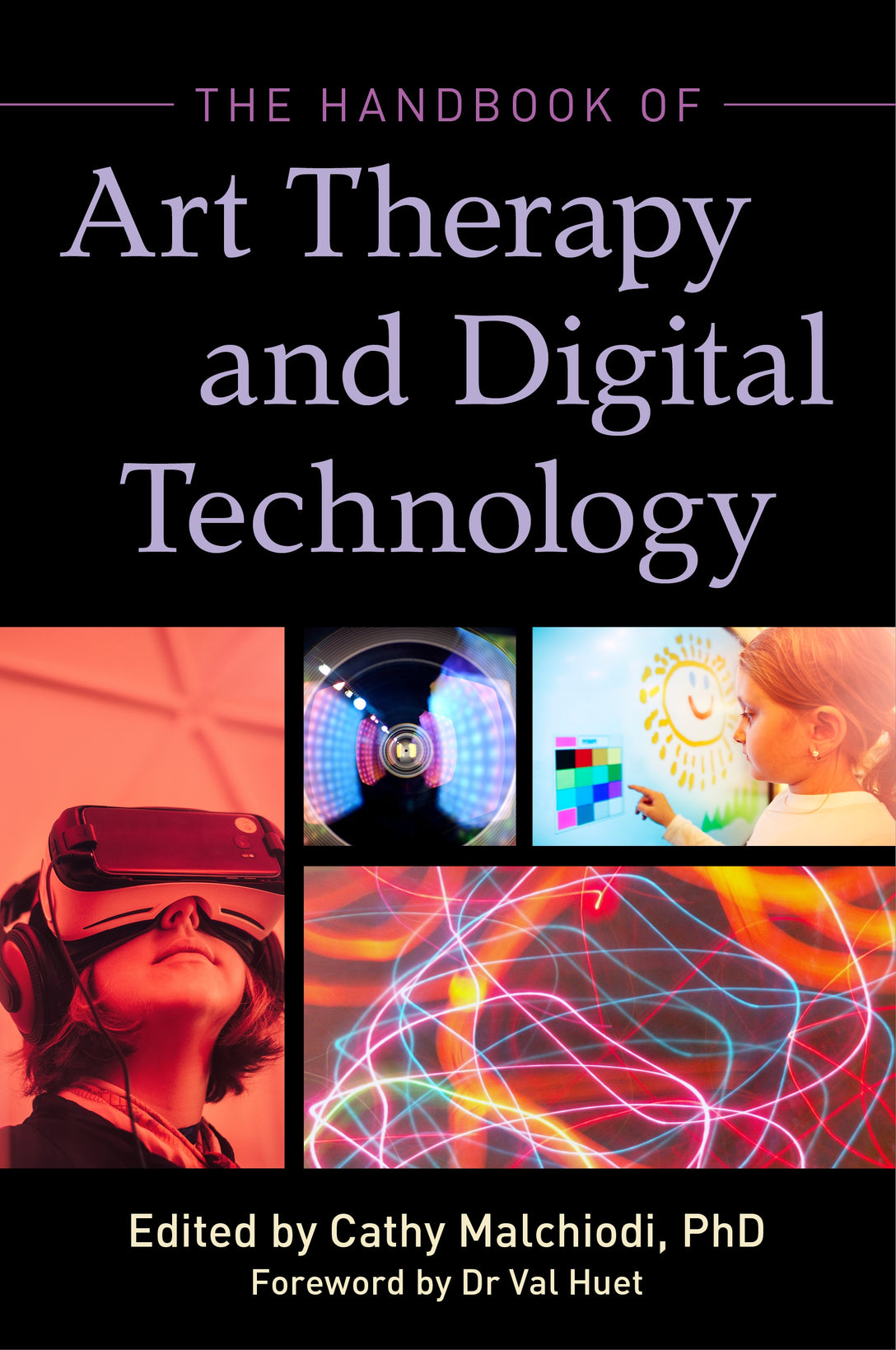

Press Reviews
Charles Schaefer, Ph.D., RPT-S, Co-Founder and Director Emeritus, The Association for Play Therapy, Clovis, CA
An absolute 'must-read' for all who seek to understand the rapidly expanding role of digital media in art therapy, including its benefits, challenges, and limitations. I highly recommend this invaluable guide!
Dr. Robert Irwin Wolf, ATR-BC, LCAT, LP, Professor, Graduate Art Therapy Faculty, The College of New Rochelle and President, The Institute for Expressive Analysis
Art therapists, practicing today, we face an ever-growing challenge as new technologies become more available and are integrated within our clinical work. Malchiodi's extensively researched Handbook identifies these many challenges, including the integration of social media, conforming to professional ethical standards and complying with mental health and health regulations, and provides an exceptionally clear guide to help us to rise to these challenges while protecting the integrity of our uniquely creative clinical focus. This is a must read for any clinician working with technology within their clinical practice.
Jane Ferris Richardson, EdD, ATR-BC, RPT-S, Associate Professor of Art Therapy, Lesley University
Malchiodi understands digital media as creative and accessible tools for building therapeutic relationships. Exploring these diverse media, in the context of these healing relationships, supports clients in creating rich imagery. And examining the individual expressive qualities of particular media, as Malchiodi and her contributors do so well, enables art therapists and art therapy students to realize the potential of these materials.
Patricia Fenner, PhD, Senior Lecturer and Co-ordinator Master of Art Therapy, School of Psychology and Public Health, La Trobe University
Initially with Cathy Malchiodi's new publication in hand, I found myself asking, how much do I want to become familiar with digital technology in my art therapy world? Through the many examples of new media and digital applications presented in this book, the obviousness of using these modalities in our practice becomes clear. Kopytin's chapter on photo-art therapy, for example, opens up an extended accessible range of collage activities. A new milieu can be formed using the digital in our community-based and clinical practices.
From the Foreword by Dr Val Huet, BAAT Chief Executive Officer
An excellent and extremely timely publication where current issues of practice, research and ethics are clearly laid out and explored. Malchiodi belongs to a small group of pioneers in this field and uses expertly her depth of understanding to address its potentials and pitfalls.
Juliet King, MA, ATR-BC, LPC, LMHC, Associate Professor, The George Washington University Art Therapy Graduate Program and Adjunct Associate Professor, Indiana University School of Medicine Department of Neurology
Malchiodi has done it again! This text is an accessible and comprehensive guide that invites a range of perspectives to explore meaning making from multiple technological data sources and helps to further define the evolution of art therapy in contemporary healthcare practice. Peppered with case examples and thoughtful recommendations, the authors never lose focus on the value of interpersonal relatedness and emphasize the priorities that a transforming society must have on attending to the bio-psycho-social and spiritual components of holistic and patient-centered care.

